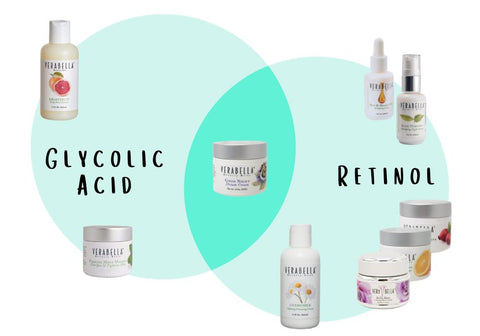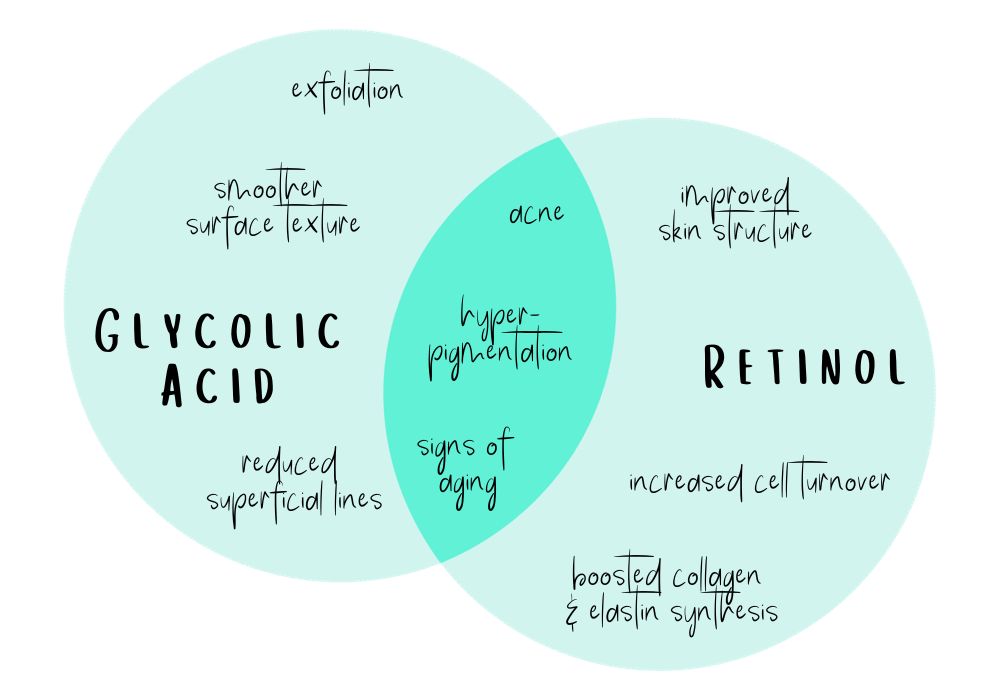You may hear us talk about how it’s mask season and the time of year to start adding in stronger skincare ingredients. You might be wondering: What’s the difference between retinol and glycolic acid, and how should I use them this time of year?
Retinol
Truth is, retinol can be used throughout the year, but there are a couple of reasons we give it more focus in the colder months.
First of all, skin is more exposed to damaging elements throughout the summer. Think harsh UV rays, drying heat, caustic pool chemicals, and sweat... despite our best intentions, many of us are so distracted with the fun and activity of summer than remembering to keep up our sunscreen and skincare routines. A powerhouse like retinol can help address deficits in skin’s structural integrity, such as sluggish collagen and elastin production or cell turnover. It also can reduce hyperpigmentation and spots that become darker in the summer and improve the texture of acne-scarring and similarly rough skin.
Secondly, because there is less daylight and sun is milder in the fall and winter, this provides an opportunity to increase the concentration of active ingredients that otherwise might sensitize the skin. Retinol is one such ingredient, which is why we always recommend using a sunscreen in conjunction with it and reserve highly concentrated retinol for fall and winter routines (or where the user is highly disciplined about their routine).
Glycolic Acid
Where retinol has a lot to do with how your skin rejuvenates from the inside out, glycolic acid, generally speaking, addresses concerns related to the outermost layers of your skin.
Glycolic Acid effectively exfoliates, not only whisking away impurities, but also chemically sloughing away dull, dead cells. Other surface-level improvements include softened superficial fine lines and wrinkles, softened acne scars, and brighter tone. We find it to be an excellent ingredient to address some concerns unique to oily and acne-prone skin, such as dark and clogged pores and excessive oiliness.
Retinol + Glycolic Acid = Twice as Nice
Besides their individual benefits, these two potent ingredients delivered together serve as one-two punch against signs of aging, acne, and hyperpigmentation. Think of them as working toward each other, one from the inside and one from the outside, to keep you looking beautiful and fresh and to keep your skin healthy and resilient.
How to Get Started
Depending on your skin type and concerns, it can take some time to figure out the best way to use Retinol and Glycolic Acid together. Our advice—which applies to any skincare products—is to take your time. Slowly incorporate ingredients and give your skin time to respond before making the next change.
It’s also worth noting that both Glycolic Acid and Retinol can be drying. If your skin tends toward the dry, be sure to use oil, serum, and/or moisturizer products to hydrate and moisturize.
Check out our Nighttime Skin Cycling Bundle for an easy routine to start, and below is a rundown of our products containing these ingredients. (Our best selling night cream, Good Night Dream Cream, delivers the best characteristics of both with a gentle touch.)


